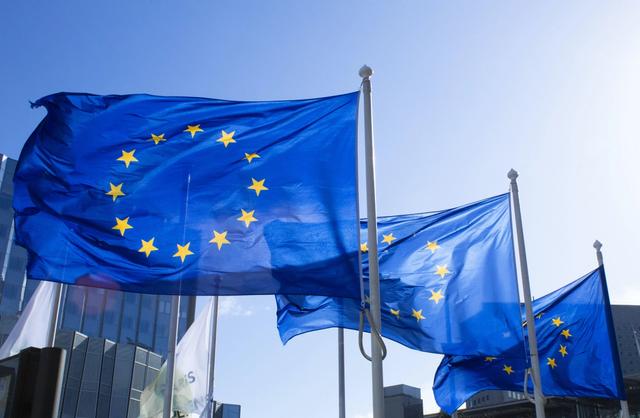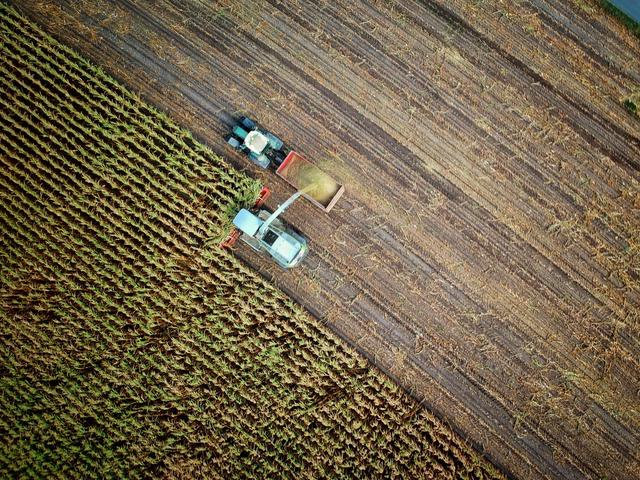What Forecasts and Trends to Expect from the Agriculture Industry in 2022
Paul Reilly
Chief Commercial Officer
Agriculture is the bedrock of civilisation. Fast-forward over 100,000 years from its earliest incarnation - when wild grains were first collected and eaten - and the cultivation of soil for growing crops and rearing animals has evolved into a high-tech, big-money industry. Today it employs more than one billion people and generates over $1.3 trillion worth of food annually from pasture and cropland that occupies roughly 50% of Earth’s habitable land.
In the UK alone, agriculture employs almost half a million people and contributed around 0.5% to the economy in 2020 . However, our reliance on this industry to provide half of the food we eat makes it sensitive to political, social, regulatory, logistical, environmental and economic variables - from the Covid-19 pandemic and Brexit to interest rates and support payments.
Equally, opportunities abound to harness technology to meet the growing demand for farm automation, digitalisation and sustainability - marking a shift towards smart farming and the efficient utilisation of time and resources while limiting crop losses.
Dwight D. Eisenhower - the 34th President of the United States - once said: “Farming looks mighty easy when your plough is a pencil and you’re a thousand miles from the cornfield.” His profound words emphasise the lack of appreciation - and understanding - many people have for this vital sector. From economic contribution, mass food production and wildlife habitat to renewable energy generation, animal welfare and tourism, to say there’s more to farming than tending fields and feeding livestock is an understatement - and events in 2022 will underscore this.
The agriculture industry’s ability to cultivate a prosperous future will be determined by several forecasts and trends over the coming months that are expected to shape this pastoral landscape.
Over 35 currencies available
Trade

Before Britain officially departed from the European Union (EU) in January 2020, many farmers flagged concerns about the prospect of a no-deal Brexit- and its potentially pernicious impact on trade. Despite eventually securing a deal with the EU, excessive paperwork and red tape at borders have heaped pressure on agricultural importers and exporters. As we enter 2022, farm leaders continue to stress that - what they perceive to be - a lightweight trade agreement could see them undercut by lower-standard cheaper food imports from further afield.
Many farmers fear that the government’s insistence on the need for free trade - in particular with countries from the South-Pacific region - will cause prices to fall. If future agreements abandon protectionist measures such as tariffs and quotas, farmers could struggle to compete. For example, the National Farmers’ Union (NFU) has warned that family-run farms won’t be able to survive when competing against industrial-scale ranches in Australia.
Labour shortages
A toxic combination of post-Brexit bureaucracy and Covid-19 travel restrictions have precipitated crippling labour shortages within the agriculture industry - particularly HGV drivers and abattoir workers.
The UK government’s decision not to include HGV drivers and poultry workers on a shortage occupation list - roles deemed to be in short supply that are subsequently afforded more relaxed eligibility criteria for sponsored work visa applications - has suffocated the supply of workers in the industry and strangled the wider supply chain. In September 2021, the NFU reported that there were over 500,000 job vacancies across the UK’s food and drinks sector.
Instead, the government announced that it would offer up to 5,000 temporary work visas for HGV drivers and a further 5,500 for poultry workers. Uptake of the visa opportunities by the end of 2021 was limited - partly due to Covid-19 travel restrictions. Before these draconian rules were imposed, there was a mass exodus of mostly eastern European HGV drivers from the UK. Unfortunately, as the pandemic eases, it appears many drivers - who previously benefited from frictionless travel to and from the UK - have decided not to return.
These issues will continue to play out in 2022 - so, what is being done to address them? On 11 January 2022, the House of Lords got the ball rolling by considering the following question for debate:
Lord Redesdale (Liberal Democrat) to ask Her Majesty’s Government what plans they have to provide support to the British farming industry to combat (1) increased production costs resulting from the ongoing labour shortages, and (2) increased competition from the Australian and New Zealand markets.
In December last year, the government acted to ease labour market shortages by allowing thousands of agricultural workers from overseas to fill gaps left by a dearth of British staff. Ministers announced that British fruit and vegetable growers can recruit overseas workers to help bring in harvests over the next three years. The extension of the UK seasonal agricultural workers’ visa scheme for another three years was hastened by pressure from farmers who believe cutting the overseas workforce would reduce domestic food production.
The Home Office announced that it would allow 30,000 overseas workers to enter the UK for up to six months for harvesting this year. While this is the same number as 2021, there is potential to increase that number by 10,000 if necessary.
Secure international payments
Supply chains

The Covid-19 pandemic has exposed fault lines throughout vital supply chain networks that we took for granted before the world economy shut down amid lockdowns. Demand for goods skyrocketed and just-in-time supply chains buckled under the pressure - and the result has been crippling: shortages of key manufacturing components, order backlogs, delivery delays, driver shortages, and a spike in transportation costs and consumer prices.
It’s not only consumers who are suffering a supply chain headache, so too are farmers and food processors. Nearly everything from fertilizer for fields, feed ingredients for livestock to harvesting fresh produce have been in short supply due to the supply chain crisis - causing input costs to rise sharply. And while the ongoing HGV driver shortage and the emergence of the Omicron coronavirus variant could perpetuate the problem, there are signs that the supply chain mess is starting to get cleaned up - although the situation may not get back to normal anytime soon.
There is evidence that bottlenecks are beginning to unclog. "I'm increasingly confident that the worst appears to be over," Matt Colyar, economist at Moody's Analytics, told CNN. "There is data suggesting that things are improving. But there's still a ton of uncertainty." If these glimmers of hope - such as port congestion easing, shipping prices falling from sky-high levels and deliveries speeding up slightly - in the supply chain crisis materialise into a bright horizon, the agriculture industry won’t just improve its economic footing; it can prevent an increase in hunger and food insecurity by ensuring consumers’ access to food.
Smart farming
Smart farming is the application of information and data technologies to optimise complex farming systems - and the potential benefits of embracing innovation are compelling: reduce the ecological footprint of farming, make agriculture more profitable for farmers, boost consumer acceptance.
Smart farming can deliver more productive and sustainable agricultural production in 2022, based on a more precise and resource-efficient approach - by deploying technologies such as:
- Internet of things (IoT): Crop field monitoring in conventional farming requires intensive labour, physical equipment, time and effort. IoT technology provides a forward-thinking alternative to these traditional methods by deploying sensors to collect data and provide accurate information via mobile apps or other means in real-time. These sensors perform vital activities, such as soil, temperature and humidity sensing, plant and livestock tracking. It also facilitates remote monitoring of farms, providing improved convenience to farmers.
- Agricultural robotics: The labour crisis within the industry is being eased by agricultural robots that possess the power to automate repetitive farm operations, including fruit-picking, harvesting, planting, transplanting, spraying, seeding and weeding.
- Artificial intelligence (AI): AI provides farmers with real-time insights from their field, empowering them to be proactive. It offers predictive tools for forecasting weather data, crop yield, and prices, helping farmers to make informed decisions. AI can also automate anomaly and disease recognition in plants and livestock for timely detection and corrective response.
- Drones: A key weapon in the struggle to increase farm productivity while saving costs is drones - also known as unmanned aerial vehicles (UAVs). This innovation collects raw data which translates into valuable information for farm monitoring. Drones equipped with cameras are capable of aerial imaging and surveying of fields, with the resulting data optimising the application of fertilizers, water, seeds and pesticides. Drones are also used in tandem with GPS technology for livestock tracking, geofencing and grazing monitoring.
Big data and analytics: Vital data is generated by farms every day, which must be analysed to be effective. Big data and analytics techniques aggregate this data and transform it into actionable insights, such as statistics around crop area, crop production, crop forecasts, land use, irrigation, agricultural prices, weather forecasts and crop diseases - laying the foundation for the next farming season. Analytical tools help to identify patterns and relationships that may otherwise remain hidden by harnessing data on weather events, farm equipment, water cycles, quality and quantity of crops.
Currency risk exposure

Challenges remain for the agriculture industry as Covid-19 restrictions ease, but opportunities will also present themselves - not least the opportunity to save money when making international payments amid pandemic-fuelled currency market volatility. As agricultural businesses adjust to the new normal and plan for the future, they must be acutely aware of the need to manage their exposure to currency risk.
Currencies are traded around the clock - 24 hours a day. Therefore, the value of the pound against other currencies is constantly changing - not just daily but by the minute. Why do they fluctuate in value? Currencies strengthen and weaken each day because banks and investors purchase huge volumes in response to political and economic news: positive news about a country typically causes the value of the currency to rise (“strengthen”), while bad news causes it to fall (“weaken”).
We also know when they might move because we often know the timing of political events that might influence them, and the economic calendar shows us when influential economic data will be released. However, there will also be news that happens without warning - anything from a US president tweeting late at night to a fall in the price of bauxite.
What we cannot predict – and no one can – is whether they will move up or down or by how much. Even slight fluctuations can make a big difference to the price of your business’s international payments. In some instances, the impact of the political and economic variables that influence exchange rates can be severe, as has been proved in recent times. For example, back in March 2020, when the true extent of the Covid-19 pandemic became clear, the pound sunk to its lowest level against the dollar since 1985 and its lowest level against the euro since the depth of the financial crisis 11 years earlier.
Before the pandemic struck, this exposure to currency market risk had the potential to dent your bottom line if left unaccounted for. Since then, however, the importance of mitigating the impact of exchange rate fluctuations on the cost of your international payments has been magnified. This has brought the need to seek the services of a currency specialist into sharp focus for many businesses in the agricultural industry.
Clear Treasury
Clear Treasury are experts providing clients with the knowledge and tools they need to operate across borders. Against the backdrop of a global pandemic, this guidance and expertise are more crucial than ever. Our relationship-focused approach achieves long term success and is underpinned by our dedication to excellent customer service.
We understand how technology is at the core of how businesses operate in the modern digitally-enabled world. This has enabled us to develop a technology platform that seamlessly integrates our products and services into your ecosystem - removing the complexity and risk involved in making international payments.
Our knowledge and experience allow us to provide our clients with solutions and guidance that help their business thrive when engaged in international trade, both through our team of experts and our innovative technology - and opening an account to access this specialist service is quick and easy.
You will be assigned a dedicated account manager who can help you to plan and establish a proactive hedging strategy. There’s no “one size fits all” approach to protecting your bottom line from the threat of currency risk. Therefore, a bespoke hedging strategy that aligns with your requirements, commercial context, and risk appetite will allow your business to execute effective solutions that sync with its aims. This dedicated expert can provide guidance and support on tools to track, target or fix exchange rates for currency transfers to hedge against currency risk when making international payments.
Related Articles
Daily Analysis: GBP/USD Hits 14-Month Lows Amid Severe Economic Uncertainty
Our daily analysis of EUR, GBP and USD.
Read more
Weekly Round-Up & The Week Ahead
Our weekly round-up and a look at the week ahead for EUR, GBP and USD.
Read more
The Rise of B2B Cross-Border Payments
Businesses that wish to protect their overseas markets or expand their international trade, must innovate their payments processes internally, or in concert with a technologically advanced fintech provider. Read on to discover more about the rise of cross-border B2B payments and what your business needs to do to stay ahead.
Read more



